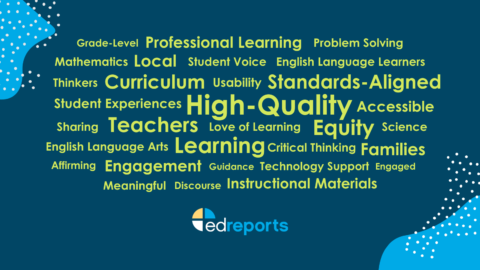5 Ways Quality Curricula Can Support English Language Learners
Teacher and coach Erin Moreno shares best practices on how to leverage aligned instructional materials to support students learning English.
Related Resources
Educators Sound Off: How I define high-quality curricula
EdReports reviewers from around the country share the importance of high-quality curricula that speak to students' perspectives and lived experiences.
“Everybody Wants to Be Seen”: A Conversation with Mathematician Georgina Rivera
Read part two of a conversation between EdReports Director of Mathematics Tim Truitt and Georgina Rivera, incoming 2nd Vice President of the National Council of Supervisors of Mathematics, about equitable mathematics and incorporating students' lives and experiences into the classroom.
Adopting Materials Through an Equity-Focused Lens: Designing an Instructional Vision
EdReports welcomes educator leaders from Aldine Independent School District and New Teacher Center for a dialogue on designing an instructional vision for the materials selection process.


